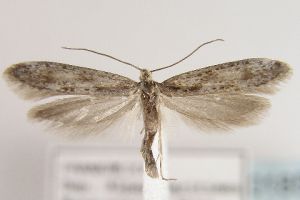

 +1Kontinente:EU
+1Kontinente:EU2. Diagnose
2.1. Falter
4. Weitere Informationen
4.1. Etymologie (Namenserklärung)
Auch diese Art wird nach der Gegend des Typenfundortes benannt: "The species name is a made-up word which refers to the area of the type locality, the Alpes Maritimes" (Huemer & Mutanen 2015).
4.2. Typenmaterial
Huemer & Mutanen (2015) schreiben zur Typenserie: "Holotype. ♂, „FRANKREICH Dep. Alpes Maritimes Marguareis W-Hang Navela 2100–2200 m 21.–23.7.1990“„leg. Huemer, Tarmann“„YPO 79 ♂ P. Huemer“ (TLMF).
Paratypes. France: 9 ♂, 5 ♀, same data, genitalia slide YPO 55 ♂ P. Huemer (TLMF); 7 ♂, 2 ♀, same data, but 18.-19.7.1991, DNA barcode IDs TLMF Lep 01850, TLMF Lep 01851, TLMF Lep 03100, TLMF Lep 03101, TLMF Lep 03102, TLMF Lep 03103 (TLMF); 3 ♂, 5 ♀, same data, but 23.7.1990 (TLMF); 1 ♂, same data, but Punta Marguareis, 2450–2650 m, 23.7.1990 (TLMF)."
4.3. Faunistik
Die Art ist nur vom Typenfundort bekannt: "Only known from the type locality, the Marguareis Massif, in the French Alpes Maritimes" (Huemer & Mutanen 2015).
4.4. Literatur
- Erstbeschreibung: Huemer, P. & M. Mutanen (2015): Alpha taxonomy of the genus Kessleria Nowicki, 1864, revisited in light of DNA-barcoding (Lepidoptera, Yponomeutidae). — ZooKeys 503: 89-133 (11 May 2015). doi: 10.3897/zookeys.503.9590. [Artikel auf zookeys.pensoft.net]




